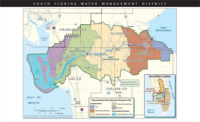Responding to nearly a year’s worth of media speculation that the May 12, 2008, earthquake in China’s Sichuan province might have been triggered by the weight of a recently impounded reservoir, an international team of dam experts has returned from China reporting that such an hypothesis “is very unlikely.”

The magnitude 7.9 Wenchuan earthquake devastated vast areas of the province located in the foothills east of the Tibetan Plateau and killed an estimated 70,000 people. The epicenter was 17 kilometers from concrete-faced rockfill Zipingpu Dam. The dam is 156 meters high and 638 m long and was completed in 2006. It was severely damaged by the temblor.
Media speculation was bolstered by a presentation at the American Geophysical Union’s fall meeting at which Christian Klose, a Columbia University geophysical research scientist, suggested that reservoir-triggered seismicity (RTS) may have been a cause. The team of dam experts from the International Commission on Large Dams says RTS has been a recognized phenomenon since 1935, when the first case was documented at Lake Mead behind Hoover Dam.
But a report by Robin Charlwood, chairman of ICOLD’s Committee on Concrete Dams, and Donald H. Babbitt, a Sacramento-based consulting civil engineer, compares the Wenchuan event with seismic activity patterns from known RTS events and discounts “the possibility of the Wenchuan earthquake being RTS.”
Robert D. van der Hilst of the Massachusetts Institute of Technology agrees. The earth sciences professor is very familiar with the region’s topography and geology. He believes the region “very likely” expe- riences magnitude 8.0 events every few thousand years. “It probably was time, dam or no dam,” he says. The Wenchuan quake was triggered at a depth of 15 km to 20 km. If it had occurred at one to two kilometers, it would be a “different discussion,” he says. He considers the connection with the dam “very tenuous.”

